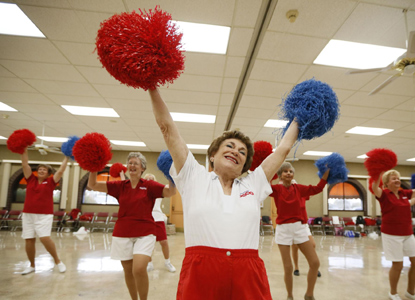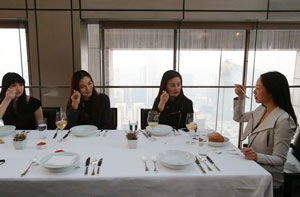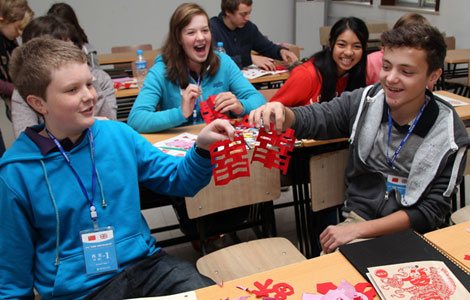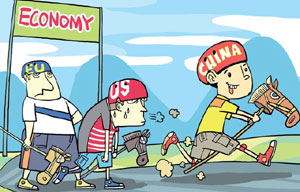Living Buddha takes on a new political role
Updated: 2013-01-28 07:33
By Wang Huazhong and Daqiong in Lhasa (China Daily)
|
||||||||
From the acne scars on his cheeks to the soft moustache on his upper lip, youth manifests itself on the face of the Living Buddha in saffron robes.
He is the recantation of Reting Rinpoche, once a religious regent in Tibet.

The 16-year-old 7th Reting Living Buddha, whose secular name is Suonam Phuntso, now has yet another role - he is the youngest member of political advisory body the Tibet Committee of the Chinese People's Political Consultative Conference.
"My favorite exercise is sit-ups," he told China Daily in an exclusive interview on Thursday. "Because I am fat."
The shy Living Buddha is tall, standing at about 1.7 meters. He inputs the reporter's number into his iPhone. "You are welcome to visit the monastery," he said.
The Rinpoche likes surfing the Web and uses the micro blog network of Tencent.
"I have more than 5,000 fans. I talk about Buddhism with people online quite often."
He has so far posted 116 micro blogs. His latest reads: "Don't care about who is the leader, but care about who treats the people well".
"Living Buddhas have to attend to the people. Without people, there are no leaders, nor Living Buddhas," he said.
In one entry he uploaded a picture of two flowers, one in bloom, the other a bud pointing to the blue sky.
He wrote: "Faith is the lighthouse of life. Without faith, we'll get lost on our way forward, and life will become meaningless."
In another entry, he re-posted a micro blog about scientists at NASA designing a sky crane maneuver for the safe landing of the Mars rover, Curiosity.
"I like technology," he said.
The Rinpoche said he seldom listens to music. The book he is reading is Life Without Limits by Nick Vujicic, an Australian born without arms or legs who overcame his disabilities to live a rich, fulfilling life.
Apart from Buddhism, he said he also learns Chinese, Tibetan and English.
"I study social sciences, economics ... but I like English the most."
He has studied English with a private tutor in Sera Monastery for two years.
According to a Xinhua report, Suonam Phuntso was enthroned as the spirit child of the 6th Reting Living Buddha when he was four.
He then moved into Reting Monastery, woke up at 6 am, went to bed at 10 pm and spent most of his time reading sutras.
China standardized procedures for searching and identifying Living Buddhas in 2007, and it has been training young Living Buddhas to be revered religious figures ever since.
In October 2011, the Tibet Buddhism University was established. Last year it taught about 20 Living Buddhas, including the Reting.
According to Chinese law, the mission of the CPPCC is to advise on major issues of the State's policy and people's lives and to play a role of democratic supervision by proposing suggestions and criticism.
The Reting Rinpoche said he will "keep the Reting linage of patriotism and the love for the religion".
This year, the new political adviser brought a proposal with him to the conference discussion. He suggested archiving and digitizing Buddhist literature for easy distribution and storage.
A total of 115 religious figures including the Rinpoche have been elected members of the Tibet Committee of the CPPCC. They took 63 more seats in the body than in the last term, and account for 18 percent of all the seats. Among them, many were born in the 1980s and 1990s.
"Young religious figures are sending people's appeals to high authorities through the conference system," said Living Buddha Thubten Drakpa of Gyatsolin Monastery, who was born in 1990 and is a graduate student at the Tibetan Traditional Medical College.
Assistant researcher Benpa Lhamu at the Tibetan Academy of Social Science said more young religious leaders have become adults, and it shows Tibetan Buddhism "has plenty of successors".
"The nation's protection and support of Tibetan Buddhism is not limited to improving the sites of religious activities. Its training and acknowledgment of religious figures also underlines that."
Contact the writers at wanghuazhong@chinadaily.com.cn and daqiong@chinadaily.com.cn











